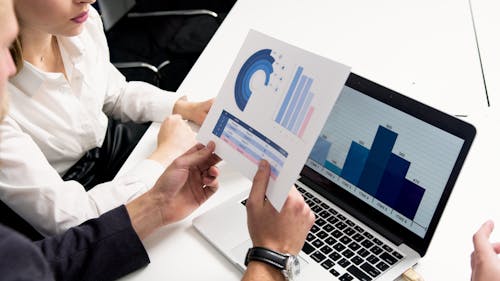Covid + Four: The Market Is At It Again

Image Source: Pexels
The pattern is simply this: with the threat of economic weakness resulting from continuing higher (for longer) rates than investors had become accustomed to over the previous 12 years, the default position has become sell that which is economically sensitive and buy that which is assumed ‘bullet proof’, large cap (now mega-cap) tech. Last week the market was at it again.
Brief History
When the market came off the COVID bottom in March 2020, in the face of a huge government stimulus, everything popped. Nasdaq climbed from a low of 6631 to 16057 (+142%) and the Russell 2000 ran from a low of 966 to 2459 (+154%). Both indices reached their respective highs in November of 2021.
With the end of ‘helicopter money’ the market went into correction mode as most were expecting the absence of stimulus to lead to an immediate economic slowdown. It didn’t happen. Most, including many economists forgot or never knew the concept of the “multiplier effect.” Once that huge Covid stimulus went into the economy it would not just get spent once. That re-circulating stimulus continues to confound economists, pundits, and the Fed to this day. The economy seems to be in “Energizer Bunny” or Timex (“It takes a licking and keeps on ticking”) mode.
Back to the 2022 correction: NASDAQ dropped 35% from its post-Covid high while the Russell 2000 fell 31%. The outperformance by the Russell from the 2020 lows and in the correction marked one of the only times recently that has occurred. It can be explained by what I would term the ‘Cathie Wood’ effect. Her philosophy of investing in innovative companies (regardless of price or maturity) as the way to fame and fortune was all the rage. In 2019 her Ark Innovation ETF (ARKK) generated a 36% return. Coming off the lows in 2020 her return was a whopping 158%. ARKK peaked in February 2021 at $159.70. It closed last week at $43.87 (-73%). Many of her failed innovative investments were in the NASDAQ composite, thus skewing the returns worse in the correction than that of the Russell 2000.
THIS WAS THE LAST TIME IN RECENT HISTORY THE R2K OUTPERFORMED THE NASDAQ
The New Narrative

Photo by Yle Archives
Since the strong talk about raising interest rates to combat inflation began back in the fourth quarter of 2022 the narrative has changed. The new thrust is that we should worry about the risk of holding less substantial, economically sensitive companies … a la those represented in the Russell 2000 and other lesser-known, mid-cap growth and value names. They will suffer the most when the much heralded, long awaited economic slowdown hits. Now, every time we post a bad inflation number or good employment numbers (evidencing a stronger-than-expected economy) we get weakness in the R2K and other economically sensitive areas. Bad news is bad news and good news is bad news. Why? It means that the Fed may have to keep rates higher for longer, which might push us into an economic slowdown where these lesser lights of the market will likely be the most negatively impacted.
The antidote; own and buy that which is immune to the economic cycle — big cap, high quality growth. Own the best in breed category … The Mag 7. Shun cyclical exposure. Shun the so-called economic risk in small cap/ mid cap growth and value. We saw this in spades last week with the Nasdaq composite having five consecutive record daily closes (up 3% on the week) and the R2K closing down on the week with a 1.61% decline on Friday.
The Message

With 15 months of a Fed funds rate above 5% and still no recession, fear of an economic slowdown is so irrationally strong as it pertains to the economic sensitivity of the R2K that it still remains 18% below its November 8, 2021, closing record high. Similar history of the 2000 internet bubble and the 1970’s “nifty fifty” would say that this negative divergence will not last. There is good money to be made away from this very crowded trade in tech, unless, “it is different this time.”
This is not a new message for me. As economist John Maynard Keynes use to say, “Markets can remain irrational longer than you can remain solvent.” Patience is required from all who play this leadership change.
More By This Author:
And Then There Was One – Nvidia“Higher For Longer”: The Market’s Over It…You Should Be Too!
The Media Infotainment Complex Strikes Back
Disclaimer: The information presented in kortsessions.com represents my own opinions and does not contain recommendations for any particular ...
more


